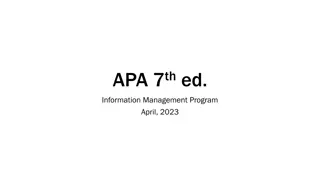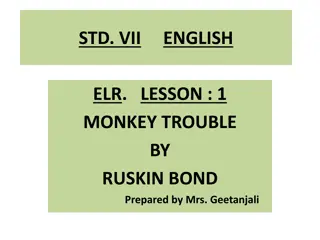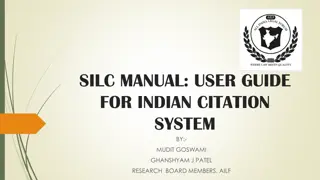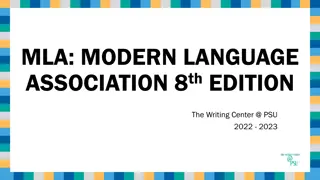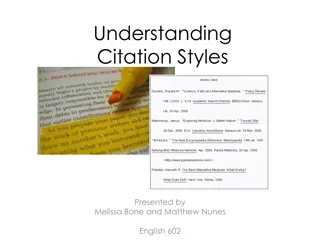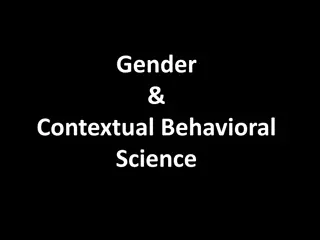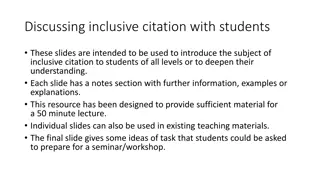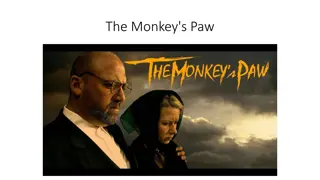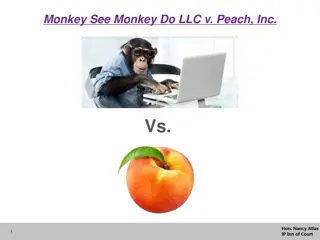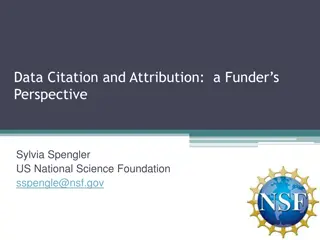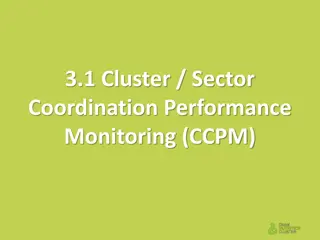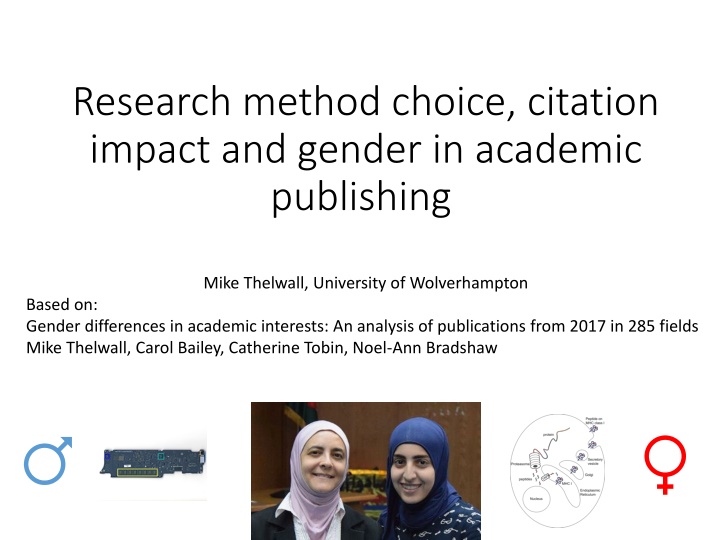
Unveiling Academic Publishing Trends: Gender Disparities in Research Method Choice
Explore the impact of gender on research method selection and citation trends in academic publishing, shedding light on disparities in 285 fields and historical biases in academia towards women. Discover how societal influences and cognitive differences impact career choices based on gender preferences and abilities.
Download Presentation

Please find below an Image/Link to download the presentation.
The content on the website is provided AS IS for your information and personal use only. It may not be sold, licensed, or shared on other websites without obtaining consent from the author. If you encounter any issues during the download, it is possible that the publisher has removed the file from their server.
You are allowed to download the files provided on this website for personal or commercial use, subject to the condition that they are used lawfully. All files are the property of their respective owners.
The content on the website is provided AS IS for your information and personal use only. It may not be sold, licensed, or shared on other websites without obtaining consent from the author.
E N D
Presentation Transcript
Research method choice, citation impact and gender in academic publishing Mike Thelwall, University of Wolverhampton Based on: Gender differences in academic interests: An analysis of publications from 2017 in 285 fields Mike Thelwall, Carol Bailey, Catherine Tobin, Noel-Ann Bradshaw
Background: Gender differences in education and occupation education and occupation A history of bias against women in academia including bans (lifted in 1974 in 5 Oxford colleges; 1988 in one Cambridge college) Males still dominate most STEM subjects in terms of degrees and occupations Females dominate health care, elementary education and domestic sphere (HEED) degrees and occupations Some careers are highly gendered, from carpenters (1.8% female) to secretaries/administrators (94.5% female) A hypothesised underlying trend is for females to prefer people-oriented careers/subjects and males to prefer thing-oriented careers/subjects but this is partly based on 1973 general occupational inventories
Background: Gender differences in abilities abilities Males and females have similar or identical cognitive abilities for most tasks except: Females have greater verbal fluency Males outperform females in some mental spatial rotation tasks More males achieve the very highest and lowest level of mathematical performance This has varied over time and varies between countries
Background: Gender differences in interests interests Some sex differences in childhood toy preferences occur before gender awareness develops and are mimicked in some monkeys (e.g., males more interested in things that move in space?) Socialisation instils gendered interests so it is difficult to be sure whether other gender interests are biological or socialised People/socialising/dolls/my little pony are female? Things/competitive sports/computer games are male?
Convincing evidence indicates that prenatal exposure to [] testosterone influences the development of children s sex-typical toy and activity interests. Boys: toy vehicles; rough and tumble; other boys Girls: dolls; other girls Hines, M. (2011). Gender development and the human brain. Annual Review of Neuroscience, 34, 69-88.
Research questions Identify fine-grained gender differences in research topics in researchers from the USA, India, UK 1. Which broad and narrow academic fields currently (2017) have gendered differences in participation rates? 2. Are there gendered differences in research topics or methods employed by researchers across academia? 3. Are there gendered differences in research topics or methods employed by researchers within narrow academic fields?
Mike -> Male; Kate, Carol -> Female; Noel-Ann -> Unknown Methods: Gender identification First author gender was estimated based on their first name Matched against the most common 10,000 first names in the USA 1990 census used at least 90% by one gender, or by Gender-API.com Proportions were corrected by checking a random sample of 1000 authors for gender based on web searches for their home pages
Most female-authoring broad fields - USA Broad field Most female narrow subfield Most male narrow subfieldF/M Fields F/M 20 1.93Review & Exam Preparation Nursing 8.68 0.56 2.03 1.03 1.94 0.49 1.50 0.74 1.24 0.54 1.86 0.31 0.86 0.54 2.02 0.26 Care Planning Veterinary 3 1.49Small Animals Food Animals Health Professions 9 0.99Occupational Therapy Radiological & Ultrasound Technology 7 0.93Developmental & Ed. Psychology Psychology Psychology (misc) Neuroscience 9 0.82Endocrine & Autonomic Systems Sensory Systems Social Sciences 22 0.76Gender Studies Political Science & Int. Rel. Immunology and Microbiology Medicine 5 0.75Virology Applied Microbiology & Biotechnology 46 0.74Obstetrics & Gynecology Orthopedics & Sports Medicine
Most male authoring broad fields -USA Broad field Most female narrow subfield Fields F/M 3 0.32Information Systems & Management Most male narrow subfieldF/M Decision Sciences Engineering 0.35 Statistics, Probability & Uncertainty0.31 16 0.32Architecture 0.75 Aerospace Engineering0.13 Selected results Computer Science Economics, & Finance Energy 12 0.30Human-Computer Interaction 0.53 Signal Processing0.20 3 0.28Economics, Econometrics & Finance (misc) 0.39 Finance0.23 5 0.26Renew. Energy, Sustainability & the Environment 0.42 Nuclear Energy & Engineering0.18 Physics and Astronomy Mathematics 10 0.24Acoustics & Ultrasonics 0.36 Physics & Astronomy (misc)0.15 14 0.22Statistics & Probability 0.34 Logic0.09
Terms used more by males overall Up to Theme M/F Top 100 terms (up to 4) Countable, Riemannian, homotopy, axiom Pure maths Engine component 15.74 Coolant, rotor, actuator, rotator, Physics 15.59 Relativity, LHC, astrophysical, spacetime, Measurement 13.40 Mach Periprosthetic, arthroscopic, decompression, embolization Bone surgery 9.72 Arthrodesis, TKA, acetabular, humeral, Signal processing 7.45 Interferometer, resonator, khz, mhz, Scholarly debate 7.32 Reply, erroneous Computing 6.53 Arbitrarily, open-source Medical imaging 6.45 Angiographic Economics 5.64 Macroeconomic, liquidity, inflation Engineering 5.04 Vorticity Religion 4.20 Doctrine 40/0 Surgery 12.08
Top female-associated terms Theme F/M Top 100 terms Mothers 15.02 Mothering, motherhood, mother-child, mother, maternal Babies 13.21 Breastfeed, breastfeeding, birthweight, babies Children 9.79 Preschool-aged, pre-schooler, childcare, Childbirth 8.65 Pre-pregnancy, childbirth, GDM, antenatal, trimester, Women 7.74 Latina's, herself, feminist, feminism, Latina, femininity, Interpersonal 6.56 Mother-infant, family-centered, parent-child Talking 6.38 Talked, speech-language, audio-recorded, verbatim, Education 5.67 Baccalaureate, service-learning, practicum, preschool Psychiatric illness 5.16 Bulimia, nervosa, eating, trauma-exposed, Gender inequality 4.25 Sexism, gendered Sexual violence 3.94 IPV, rape, harassment Contraception 3.67 Contraception, contraceptive Female health 3.53 Menopausal, menopause, menstrual, gynecology Interviews 3.34 Videotaped, facilitator, semistructured, transcribed Nursing 3.26 Nursing, nurse Psychotherapy 3.24 Yoga Social inequality 3.06 Socioeconomically, intersectionality, sociocultural, Food health 3.04 Lunch (e.g., national school lunch programmes) Health manage. 2.91 Self-management Lang. community 2.78 Monolingual, Spanish-speaking Carers 2.73 Caregiving, caregiver Survey 2.54 Mailed
Female topics - are people enough? Not all people attract female research to the same extent Veterinary is not human-related and is an exception Cell biology is an exception
Male topics: Are things enough? Patients and surgery are an exception Political/control research topics are an exception Abstract research topics are an exception
Qualitative/quantitative methods Females Qualitative and exploratory methods Interviews and surveys Males Quantitative methods Experimenting
How is the UK different? Not much More female in the UK: Veterinary; Dentistry; Biochemistry, Genetics and Molecular Biology; Decision Sciences; Energy More male in the UK: Health Professions; Chemical Engineering
How is India different? All broad fields male gendered fewer females overall Narrower gap between fields in gender splits few fields highly male Veterinary Science is highly male, instead of highly female
Citation impact in 2014 1.0 = Gender parity in citations Spain, UK, USA: little (<0.5%) gender difference in citation impact; India, Turkey: male- authored articles more cited
Number of article readers in 2014 1.0 = Gender parity in readers Spain, Turkey, UK, USA: females more read; India: males more read
Conclusion Some hypothesised gender-based patterns modified (e.g., people/things) New gender-based patterns discovered (e.g., people methods, abstraction, power/control) Causes unknown: other methods needed to get more insights into these Do research managers/journal editors need to be more aware of gender differences so that they can be more receptive to female research styles and topics? More ideas: Thelwall, M. & Mas-Bleda, A. (2018). YouTube science channel video presenters and comments: Female friendly or vestiges of sexism? Aslib Journal of Information Management, 70(1), 28-46.


